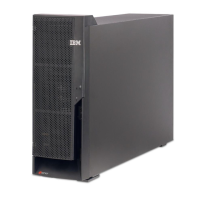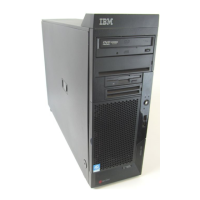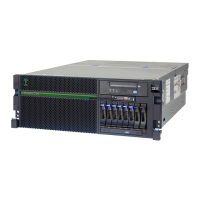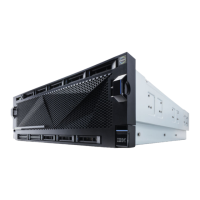5486LPOpS.fm Draft Document for Review October 18, 2004
586 IBM Eserver i5 and iSeries System Handbook
OS/400 Version 5 includes capabilities (via Infoprint Server for iSeries) to handle
PCL, PostScript, and PDF output with PSF/400 print management.
PSF/400 is the OS/400 subsystem driving the interactive management of IPDS
printers. IPDS is a bidirectional print architecture that ensures that the printing
process can be managed every step of the way. When an OS/400 writer is
started to an IPDS printer, PSF/400 provides these services:
Establishes communication and query printer capabilities and status
Manages overlay, image, and font resources required in the printer
Transforms the iSeries spooled file (from AFP, IPDS, or SCS) into a
printer-specific IPDS data stream
Manages the print process, including handling error conditions and managing
error recovery down to the page level
The net effect of this level of print management is to ensure each page of each
spooled file is printed completely and accurately. PSF/400 enables all
parameters of the printer file and all DDS print keywords (subject to printer
limitations). IPDS printing takes on added significance across the network.
TCP/IP print support is more limited than traditional iSeries print management.
The Send Network Spooled Files
(SNDNETSPLF) command (LPR in TCP/IP
terminology) simply sends a spooled file with limited instructions and no
feedback as to whether it was received and printed correctly.
Applying IPDS to a TCP/IP network restores the same level of print support (as
described above) as twinaxial-connected printers. This includes sending
standard SCS spooled files across the network.
To create an IPDS printer on the system, you must (after specifying the device
type as IPDS) specify AFP(*YES) in the printer device description. Any printer
defined as Type(*IPDS) and AFP(*YES) needs PSF/400. Twinaxial connected
IPDS printers can be defined as AFP(*NO) and, therefore, do not require
PSF/400. Regardless of connection type, AFP (*NO) means that there is no AFP
resource management for fonts, images, or overlays. All IP-connected IPDS
printers must be configured with AFP(*YES) and, therefore, require PSF/400.
The PSF feature of OS/400 required is based on the speed of the fastest printer
measured in impressions per minute (IPM), not by your CPU size. The number of
printers does not matter. The speed of the fastest printer does.
The OS/400 option number associated with each tier is represented in the
following table.
